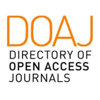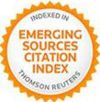Abstract
Keywords
Full Text:
PDFDOI: http://dx.doi.org/10.2423/i22394303v11n2p83
References
Abbate, E., Invernizzi, S., & Spanò, A. (2020). A. HBIM parametric modelling from clouds to perform structural analyses based on finite elements: a case study on a parabolic concrete vault. Applied Geomatics, 1-18.
Allegra, V., Di Paola, F., Brutto, M. L., & Vinci, C. (2020). Scan-to-BIM for the management of heritage buildings: the case study of the castle of Maredolce (Palermo, Italy). The International Archives of Photogrammetry, Remote Sensing and Spatial Information Sciences, 43, 1355-1362.
Angjeliu, G., Coronelli, D., & Cardani, G. (2020). Development of the simulation model for Digital Twin applications in historical masonry buildings: The integration between numerical and experimental reality. Computers & Structures, 238, 106282.
ASAaq – Archivio di Stato dell’Aquila. Fondo Intendenza, Categoria Strade e ponti.
ASCE. 2017. Infrastructure Report Card, 2017, https://www.infrastructurereportcard.org/.
Bazzucchi, F., Restuccia, L., & Ferro, G. A. (2018). Considerations over the Italian road bridge infrastructure safety after the Polcevera viaduct collapse: past errors and future perspectives. Frattura e Integrita Strutturale, 12.
Boje, C., Guerriero, A., Kubicki, S., & Rezgui, Y. (2020). Towards a semantic Construction Digital Twin: Directions for future research. Automation in Construction, 114, 103179.
Brogiolo, G. P., & Cagnana, A. (2012). Archeologia dell'architettura-metodi e interpretazioni (Vol. 3). Firenze, Italy: All’Insegna del Giglio.
Cascardi, A., Armonico, A., Micelli, F., & Aiello, A. (2021). Innovative Non-destructive Technique for the Structural Survey of Historical Structures. In Rainieri, C., Fabbrocino, G., Caterino, N., Ceroni, F, Notarangelo, M.A., (Eds.), Civil Structural Health Monitoring. CSHM 2021. Lecture Notes in Civil Engineering (pp.569-583). Cham, CH: Springer.
Cera, V., & Campi, M. (2021). Segmentation protocols in the digital twins of monumental heritage: a methodological development. DISEGNARECON, 14(26), 14-1.
CoE 2005 – Council of Europe (2005). Framework Convention on the Value of Cultural Heritage for Society. Council of Europe Treaty Series No. 199. Accessed November 17, 2021: https://rm.coe.int/090000168071aabc
Conti, A., Fiorini, L., Massaro, R., Santoni, C., & Tucci, G. (2020). HBIM for the preservation of a historic infrastructure: The Carlo III bridge of the Carolino Aqueduct. Applied Geomatics, 1-11.
Costin, A., Adibfar, A., Hu, H., & Chen, S. S. (2018). Building Information Modeling (BIM) for transportation infrastructure–Literature review, applications, challenges, and recommendations. Automation in Construction, 94, 257-281.
De Luca, L. (2011). Verso la caratterizzazione semantica di rappresentazioni digitali di artefatti architettonici: linee programmatiche di ricerca. Disegnarecon, 99-106.
Doglioni, F. (1997). Stratigrafia e Restauro. Tra Conoscenza e Conservazione dell’Architettura. Trieste, Italy: Lint Editoriale.
European Commission, EC. 2011. White Paper, Roadmap to a Single European Transport Area –Towards a Competitive and Resource Efficient Transport System. Accessed November 17, 2021: http://eur-lex.europa.eu/LexUriServ/LexUriServ.do?uri=COM:2011:0144:FIN:EN:PDF
European Commission, EC 2020 – European Commission (2020) Shaping Europe’s digital future. Accessed November 17, 2021: https://ec.europa.eu/info/strategy/priorities-2019-2024/europe-fit-digital-age/shaping-europe-digital-future_en
Fabbrocino, G., Marra, A., Savini, F., & Trizio, I. (in press). Virtual investigation of masonry arch bridges: digital procedures for inspection, diagnostics, and data management. In 1st Conference of the European Association on Quality Control of Bridges and Structures – EUROSTRUCT2021 (in press).
Fiorani, D. (1996). L’invecchiamento e il degrado. In G. Carbonara (Ed.) Trattato del Restauro Architettonico (pp. 297-409); Torino, Italy: UTET.
Francovich, R., & Parenti, R. (1988). Archeologia e Restauro dei Monumenti. Firenze, Italy: All’Insegna del Giglio.
Garozzo, R., & Santagati, C. (2021). Digital Survey AI and Semantics for Railway Masonry Bridges Health Assessment. The International Archives of Photogrammetry, Remote Sensing and Spatial Information Sciences, 46, 249-255.
Girardet, A., & Boton, C. (2021). A parametric BIM approach to foster bridge project design and analysis. Automation in Construction, 126, 103679.
Godinho, M., Machete, R., Ponte, M., Falcão, A. P., Gonçalves, A. B., & Bento, R. (2020). BIM as a resource in heritage management: An application for the National Palace of Sintra, Portugal. Journal of Cultural Heritage, 43, 153-162.
Guzzetti, F., Anyabolu, K. L. N., Biolo, F., & D’Ambrosio, L. (2021). BIM for Existing Construction: A Different Logic Scheme and an Alternative Semantic to Enhance the Interoperabilty. Applied Sciences, 11(4), 1855.
ICOMOS 2003 – Principles for the Analysis, Conservation and Structural Restoration of Architectural Heritage. Accessed November 17, 2021: https://www.icomos.org/images/DOCUMENTS/Charters/structures_e.pdf
Invernizzi, S., Montagnoli, F., & Carpinteri, A. (2019). Fatigue assessment of the collapsed XXth Century cable-stayed Polcevera Bridge in Genoa. Procedia Structural Integrity, 18, 237-244.
Jouan, P., & Hallot, P. (2020). Digital twin: Research framework to support preventive conservation policies. ISPRS International Journal of Geo-Information, 9(4), 228.
Kang, J. S., Chung, K., & Hong, E. J. (2021). Multimedia knowledge‐based bridge health monitoring using digital twin. Multimedia Tools and Applications, 1-16.
Liberatore, G. (1983). Navigazione della Pescara. Problema. Opuscoli vari, (vol. 2). L’Aquila, Italy: Tip. Rietelliana.
Lubowiecka, I., Arias, P., Riveiro, B., & Solla, M. (2011). Multidisciplinary approach to the assessment of historic structures based on the case of a masonry bridge in Galicia (Spain). Computers & structures, 89(17-18), 1615-1627.
Marra, A., Trizio, I., & Fabbrocino, G. (2021, March). Digital Tools for the knowledge and safeguard of historical heritage. In International Workshop on Civil Structural Health Monitoring (pp. 645-662). Cham, CH: Springer.
Marra, A., Trizio, I., Savini, F., Ruggieri A., & Fabbrocino G. (2021). Una procedura per l’Historic Digital Twin (HDT) dei ponti ad arco in muratura/ A procedure for Heritage Digital Twin (HDT) of masonry arch bridges. In T. Empler, A. Caldarone, & A. Fusinetti (Eds.), 3D Modelling e BIM 2021 – Digital Twin (pp. 358-373). Roma, Italy: DEI srl Tipografia del Genio Civile.
Matrone, F. (2018). Modello HBIM da nuvola di punti: La verifica metrica dei dati e la validazione dei risultati. Bollettino della società italiana di fotogrammetria e topografia, (2), 48-56.
Messaoudi, T., Véron, P., Halin, G., & De Luca, L. (2018). An ontological model for the reality-based 3D annotation of heritage building conservation state. Journal of Cultural Heritage, 29, 100-112.
MIT 2020. Decree of Ministry of Infrastructure no. 578 17/12/2020. Guidelines on risk classification and management, safety assessment and monitoring of existing bridges; High Council of Public Works, Italian Ministry of Infrastructures and Transportations: Roma, Italy, 2020. (In Italian). Accessed November 17, 2021: https://www.mit.gov.it/comunicazione/news/mit-approvate-le-linee-guida-per-la-sicurezza-dei-ponti
Mora, R., Sánchez-Aparicio, L. J., Maté-González, M. Á., García-Álvarez, J., Sanchez-Aparicio, M., & Gonzalez-Aguilera, D. (2021). An historical building information modelling approach for the preventive conservation of historical constructions: Application to the Historical Library of Salamanca. Automation in Construction, 121, 103449.
Omer, M., Margetts, L., Hadi Mosleh, M., Hewitt, S., & Parwaiz, M. (2019). Use of gaming technology to bring bridge inspection to the office. Structure and Infrastructure Engineering, 15(10), 1292-1307.
Petrangeli, M., Lardani, I., & del Drago, F. (2019). Conservazione e rinnovamento dei ponti stradali italiani in calcestruzzo. Ponti&Viadotti, 136, 46-56.
Rainieri, C., Gargaro, D., Fabbrocino, G., Maddaloni, G., Di Sarno, L., Prota, A., & Manfredi, G. (2018). Shaking table tests for the experimental verification of the effectiveness of an automated modal parameter monitoring system for existing bridges in seismic areas. Structural Control and Health Monitoring, 25(7), e2165.
Russo, M., & De Luca, L. (2021). Semantic-driven analysis and classification in architectural heritage. DISEGNARECON, 14(26), 1-6.
Sampaio, A. Z., Pinto, A. M., Gomes, A. M., & Sanchez-Lite, A. (2021). Generation of an HBIM Library regarding a Palace of the 19th Century in Lisbon. Applied Sciences, 11(15), 7020.
Santagati, C., Turco, M. L., & D’Agostinoa, G. (2017). Populating a library of reusable H-BOMs: assessment of a feasible image based modeling workflow. International Archives of the Photogrammetry, Remote Sensing and Spatial Information Sciences, 42(2/W5).
Savini, F., Rainieri, C., Fabbrocino, G., & Trizio, I. (2021). Applications of Stratigraphic Analysis to Enhance the Inspection and Structural Characterization of Historic Bridges. Infrastructures, 6(1), 7.
Solla, M., Caamaño, C., Riveiro, B., & Lorenzo, H. (2011, June). GPR analysis of a masonry arch for structural assessment. In 2011 6th International Workshop on Advanced Ground Penetrating Radar (IWAGPR) (pp. 1-6). IEEE.
Teruggi, S., Grilli, E., Fassi, F., & Remondino, F. (2021). 3D Surveying, Semantic Enrichment and Virtual Access of Large Cultural Heritage. ISPRS Annals of the Photogrammetry, Remote Sensing and Spatial Information Sciences, 8, 155-162.
Torre, C. (2003). Ponti in muratura: dizionario storico-tecnologico. Firenze, Italy: Alinea.
Trizio, I., Marra, A., Savini, F., & Fabbrocino, G. (2021). Survey Methodologies and 3d Modelling for Conservation of Historical Masonry Bridges. ISPRS Annals of the Photogrammetry, Remote Sensing and Spatial Information Sciences, 8, 163-170.
Trizio, I; Savini, F., Marra, A., & Fabbrocino G. (in press). Integrated survey procedures for seismic protection of monumental liturgical furniture. In IMEKO- International Conference on Metrology for Archaeology and Cultural Heritage. MetroArchaeo 2021 (in press).
UNI (2018). UNI 11337. Building and civil engineering works – Digital management of the informative; UNI, Ente Nazionale di Normazione, 2018.
Vittoria, A. (2016). L'amministrazione di Ponti e strade nel Regno di Napoli di Giuseppe Bonaparte. Le Carte e la Storia, 22(2), 59-74.
Xia, T., Yang, J., & Chen, L. (2022). Automated semantic segmentation of bridge point cloud based on local descriptor and machine learning. Automation in Construction, 133, 103992.
Article Metrics
Metrics powered by PLOS ALM
Refbacks
- There are currently no refbacks.
Copyright (c) 2021 Adriana Marra, Ilaria Trizio, Giovanni Fabbrocino, Francesca Savini

This work is licensed under a Creative Commons Attribution-NonCommercial-NoDerivatives 4.0 International License.
SCIRES-IT, e-ISSN 2239-4303
Journal founded by Virginia Valzano





